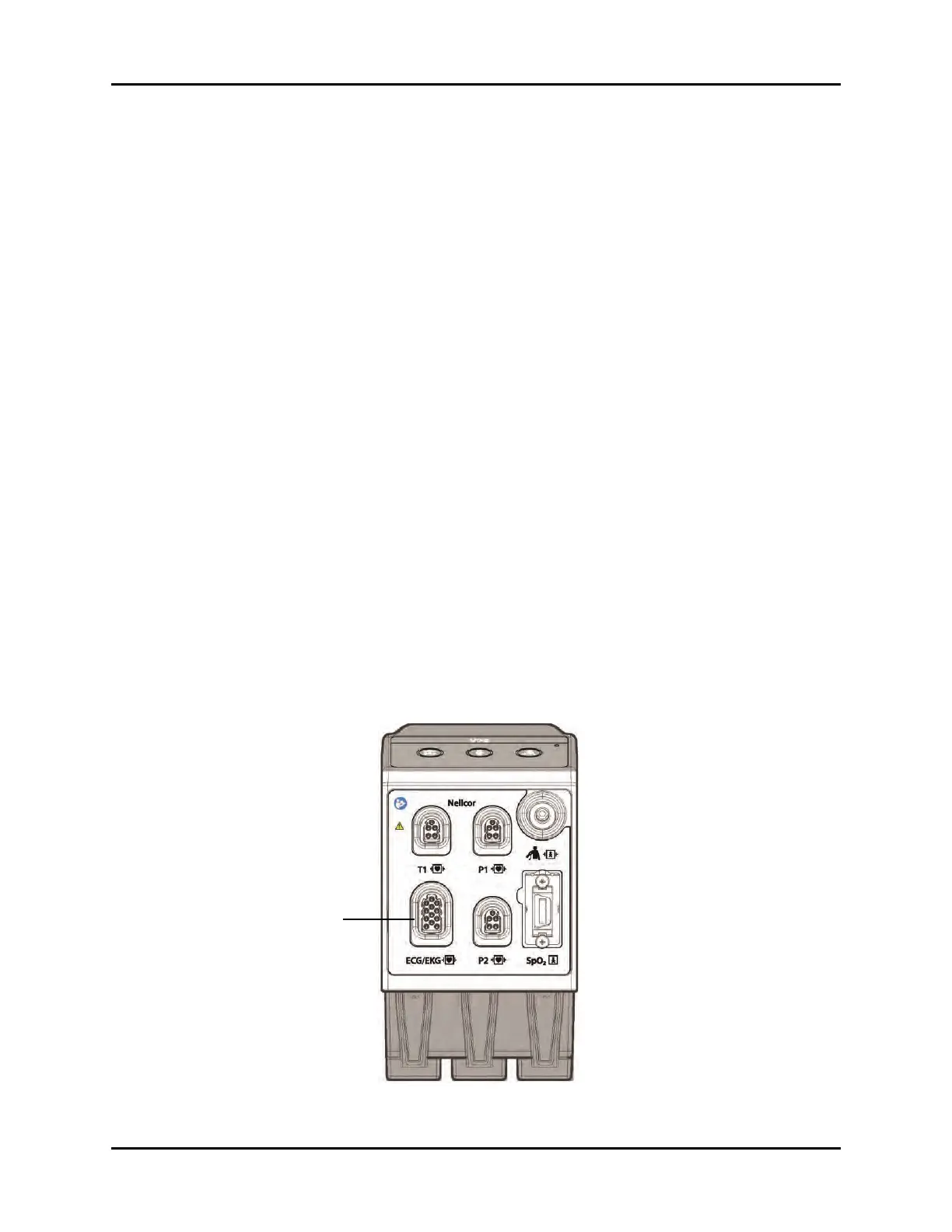Introduction ECG – Arrhythmia
9 - 2 V Series Operating Instructions
9.1 Introduction
This chapter describes the ECG – Arrhythmia dialogs in detail, including configuring alarm limits,
parameter setup, waveform speed, skin preparation and lead placement, the arrhythmia algorithm,
and 12 Lead Interpretation. ECG is a continuous waveform of a patient's cardiac electrical activity. An
ECG waveform displays in the first waveform area of the V 12/V 21.
The quality of an ECG signal is directly affected by electrode site skin preparation, electrode patch
quality and ECG lead placement. If artifact is present on the ECG waveform, then the arrhythmia
processing, alarm processing, and quality of the monitoring function may be affected. The presence
of artifact can prevent the monitor from establishing an accurate ECG reference waveform, increasing
the difficulty experienced in assessing the ECG rhythm.
Optimizing the ECG signal is imperative for accurate monitoring. Use high quality electrodes,
designed to acquire the ECG with excellent base line stability, recovery from defibrillation and
minimum artifact from patient movement.
With the V 12/V 21, ECG can be obtained by using a 3/5/12 lead ECG cable in conjunction with the
matching skin electrodes. For best performance and safety, inspect the ECG cables and electrodes
daily.
Patient Sizes
Intended patient types for Arrhythmia: Adult and Pediatric;
Intended patient types for QT/QTc measurement: Adult and Pediatric;
Intended patient types for 12 Lead Interpretation: Adult, Pediatric, and Neonate.
VPS Connector
The VPS module supports one (1) ECG/EKG connector (shown in FIGURE 9-1).
FIGURE 9-1 Example VPS ECG Connector (Nellcor)

